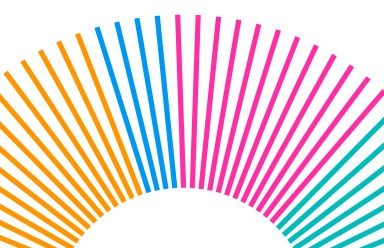On any given day, a marketer does battle with 5,000, 10,000, perhaps 20,000 competitors, all hoping a brand impression seizes the attention of consumers and, equally importantly, etches a little space inside their memory banks by being a bit more engaging than other distractions in our modern lives. This struggle unfolds on an ever-changing media landscape as technology develops, new app trends emerge, and social networks develop more and more sophisticated algorithms and approaches to targeting.
In this distracted, fragmented environment, it’s more challenging than ever for a brand to break through. Consequently, marketers are always looking for tools that can explain and interpret brand performance more effectively. Non-conscious emotional processing and memory activation are fundamental drivers of decision making, so the ability of consumer neuroscience tools to capture these processes allows them to make a valuable contribution to the field.
The discipline of consumer neuroscience has seen many changes over the past decade. As exciting new techniques were being developed or adapted from medical research (e.g. electroencephalography, biometrics, and facial coding), many neuroscientists saw a chance to put them to use to answer a variety of marketing questions. In their enthusiasm, they sometimes failed to recognize that each of these techniques had limitations as well as strengths. By applying these tools too broadly, or by relying on one technology to answer too many questions, researchers ended up oversimplifying some aspects of human neurobiology, which is highly complex.
It’s only very recently that researchers have started to combine multiple neuroscience techniques in a thoughtful way to make up for some of their blind spots. The whole, it turns out, is greater than the sum of the parts, and for the first time, neuroscientists are now able to tackle real-life problems without reducing them to what any one of those individual techniques could measure on its own.
For instance, consider a 30-second television commercial that touts the benefits of a new car insurance plan. Using electroencephalography (EEG), we’re able to tell, second by second, what parts of the commercial elicit a response from the viewer, including what in particular is catching the attention and activating the memory of the viewer, along with the “direction” of the emotional response (approach or withdrawal). This is critical to understanding the ad’s success. However, the amplitude of the EEG readings is sometimes too low to measure the strength of the reaction.
When we add biometrics, the amplitude of the readings is much greater, and it becomes possible to measure the strength of a viewer’s overall emotional response. Change the spokesperson in the ad, or the background color in the animation, or the music, and the relative difference in biometric energy will give marketers more information about which version of the ad works best.
Facial coding allows us to add another dimension to those viewer reactions. We might pick up a frown (‘dislike’) when the spokesperson mentions car accidents for young drivers or a smile (‘like’) when the ad mentions accident forgiveness. Combined with the EEG readings, those data points can help us understand whether and how the viewer is engaged. Add in eye-tracking, and another dimension—the visual processing of the ad—comes to life.
Taken together, these techniques overcome the shortcomings of earlier frameworks, and offer a remarkably accurate “read” of whatever combination of features a marketer wants to test. It’s a real breakthrough: From video ads, store displays, and product packaging, to new forms of marketing communications, consumer neuroscience’s much-improved diagnostics capabilities are rapidly making it an essential partner in the creative process.
Does it mean that we have all the answers now? Of course not. The way we consume content is changing all the time: we watch more and more content on small-screen mobile platforms, and our brain states in those situations are not the same as when we’re watching content on a big screen and sitting down in the comfort of our living rooms. Neuroscience tools need to be fine-tuned to capture consumers’ reactions when they’re on-the-go or being distracted. And more and more advertising campaigns are multi-platform efforts where it can be difficult to tease out the effect that each platform contributes to the overall impact of the campaign.
Human beings are complex: we get easily distracted in today’s consumer environment; we don’t necessarily respond to the most obvious stimulus in an advertising message; we sometimes avoid the things we like (e.g., chocolate when we are on a diet) and seek out the things we don’t like (e.g., buying car insurance because it makes us safe). The challenges remain enormous but the progress made so far is extremely encouraging.



